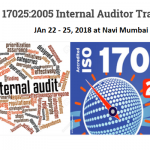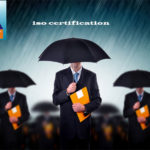ISO 14001 Essentials
The ISO 14001 family of International Standards addresses various aspects of environmental management. The two standards, ISO 14001:2004 and ISO 14004:2004 deal with environmental management systems (EMS). ISO 14001:2004 provides the requirements for an EMS and ISO 14004:2004 gives general EMS guidelines.
The other standards and guidelines in the family address specific environmental aspects, including: labeling, performance evaluation, life cycle analysis, communication and auditing.
Benefits of ISO 14001:2004 based EMS:
An EMS meeting the requirements of ISO 14001:2004 is a management tool enabling an organization of any size or type to:
• identify and control the environmental impact of its activities, products or services, and to
• improve its environmental performance continually, and to
• implement a systematic approach to setting environmental objectives and targets, to achieving these and to demonstrating that they have been achieved.
How it works?
• ISO 14001:2004 does not specify levels of environmental performance. If it specified levels of environmental performance, they would have to be specific to each business activity and this would require a specific EMS standard for each business.
• ISO has many other standards dealing with specific environmental issues. The intention of ISO 14001:2004 is to provide a framework for a holistic, strategic approach to the organization’s environmental policy, plans and actions.
• ISO 14001:2004 gives the generic requirements for an environmental management system. The underlying philosophy is that whatever the organization’s activity, the requirements of an effective EMS are the same.
• This has the effect of establishing a common reference for communicating about environmental management issues between organizations and their customers, regulators, the public and other stakeholders.
Because ISO 14001:2004 does not lay down levels of environmental performance, the standard can be implemented by a wide variety of organizations, whatever their current level of environmental maturity. However, a commitment to compliance with applicable environmental legislation and regulations is required, along with a commitment to continual improvement – for which the EMS provides the framework.
The EMS Standards:
• ISO 14004:2004 provides guidelines on the elements of an environmental management system and its implementation, and discusses principal issues involved.
• ISO 14001:2004 specifies the requirements for such an environmental management system. Fulfilling these requirements demands objective evidence which can be audited to demonstrate that the environmental management system is operating effectively in conformity to the standard.
What can be achieved?
• Provide assurance to management that it is in control of the organizational processes
and activities having an impact on the environment.
• Assure employees that they are working for an environmentally responsible organization.
• Support the organization’s claims and communication about its own environmental policies, plans and actions.
• Provides a framework for demonstrating conformity via suppliers’ declarations of conformity, assessment of conformity by an external stakeholder – such as a business client – and for certification of conformity by an independent certification body.
• Provide assurance on environmental issues to external stakeholders – such as customers, the community and regulatory agencies.
• comply with environmental regulations
Business benefits of ISO 14001:
Most managers will try to avoid pollution that could cost the company a fine for infringing environmental legislation. But better managers will agree that doing only just enough to keep the company out of trouble with government inspectors is a rather weak and reactive approach to business in today’s Environment-conscious world.
The ISO 14001 standards are practical tools for the manager who is not satisfied with mere compliance with legislation – which may be perceived as a cost of doing business. They are for the proactive manager with the vision to understand that implementing a strategic approach can bring return on investment in environment-related measures.
The systematic ISO 14001:2004 approach requires the organization to take a hard look at all areas where its activities have an environmental impact. And it can lead to benefits like the following:
• reduced cost of waste management
• savings in consumption of energy and materials
• lower distribution costs
• improved corporate image among regulators, customers and the public
• Framework for continual improvement of environmental performance.
• The manager who is “too busy managing the business” to listen to good sense about environmental management could actually be costing the business, instead of achieving benefits like those above.
If you would like to learn more, contact us at info@lakshy.com or visit www.lakshy.com or call our 24 hours customer care +91 9821780035 to get your organization ISO 14001:2004 certified.








